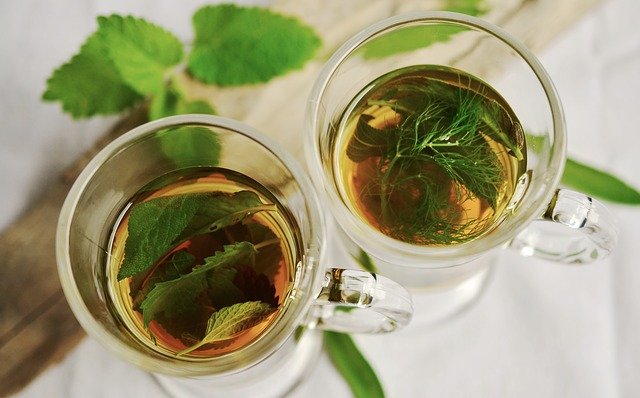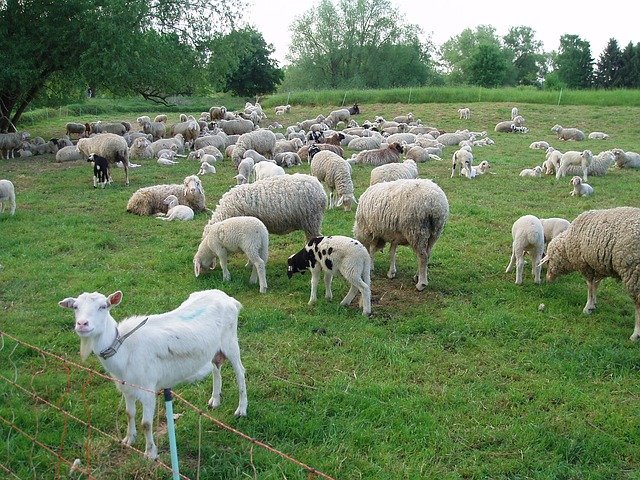Part 1 covers some alternatives if there are any issues breastfeeding. Part 2 will cover introducing solids.
I’ve been writing about real foods here on Steemit for some months now, focusing especially on recipes for people who are sick, allergic or want to follow a Paleo diet. But I didn’t think about babies till I read a post yesterday by @momone, one of our new members, who has a highly allergic baby. I don’t know if this post will be helpful for her or not, but I hope it will spark some new ideas.

Breast is best
I don’t think many people would argue with that statement. The vast majority of the time, Nature’s method for feeding babies will give the best result. (And don’t get me started on nutcases who object to mothers nursing in public.)
But sometimes it just doesn’t work. Maybe mum isn’t producing enough milk. Or maybe baby has allergies. Let’s discuss some alternatives.
Formula
It won’t surprise you that I’m not a fan of formula. Yes, it’s the easiest option, and sometimes you might need to use a formula, at least initially. But the ingredients are often less than ideal, and they’re very processed. I’ve seen formulas with canola oil in them (shudder) which is usually an oil you want to avoid at all costs. See my post on Good fats vs bad fats
The worst formula option is soy. Soy is a potent hormone disruptor, and I would only feed it to a baby if they were failing to thrive and none of the other options in this post were working.
An exception to this rule of thumb would be:
• Amino acid formulas
• Goat milk formulas
If none of the options below work out, your highly allergic baby may need one of these.
Change mum’s diet
If you know what your baby is allergic to, you may be able to cut those foods out of your own diet, and then feed successfully. This would be my preferred option, if it’s possible.
If you are having problems breast feeding for other reasons, it’s possible that changing to a real food diet, with a full range of nutrients, may help. There are other approaches to increasing breast milk that a specialist in that area could help you with, but that’s outside my area of expertise.

Milk from another mum
Using a wet nurse is a traditional way of coping with lack of breast milk. It’s probably not a practical option for most. But you may be able to find someone who will sell expressed breast milk to you.
Making your own formula
This is of course the most labour intensive method, and you wouldn’t want to go inventing your own recipe, as you need to get the balance of nutrients as close as possible to mother’s milk.
But luckily Sally Fallon, president of the Weston A Price foundation and author of Nourishing Traditions has done that work for you. She developed two recipes. One uses raw (unpasteurised) milk and would be the preferred option if baby can tolerate dairy. The other uses liver as a base.
The recipes for both can be found at this link on the Weston A Price foundation website. There is a lot of extra information at this link about why the formulas include specific ingredients.

What about goat, sheep, buffalo or camel milk?
These options are all more digestible than cow’s milk. For many people, one of these (even pasteurised) would be better than even the best quality cow’s milk (even if raw).
They won’t provide all the nutrients a baby needs though. You would still need to make a formula. Just remember that these milks have different macro nutrients than cow’s milk. So you might need to make some tweaks. The adjustment for goat’s milk is in the link above.
What about vegetarian options?
First a disclaimer - no disrespect to my vegetarian or vegan friends is intended here. You are adults and able to make your own decisions about what your own bodies need.
But my belief is that babies need a full range of nutrients to develop fully, and that they NEED an omnivorous diet for at least the first few years of their lives. And I’ll say it again, please don’t feed soy unless there really are no other alternatives.
Thanks for reading and check back soon for Part 2 – introducing solids.
Photos by myself, @sift666 or from Pixabay, unless otherwise stated.
Follow me for more health, nutrition, food, lifestyle and recipe posts.

Contact me in SteemitChat to ask about one on one nutritional coaching or EFT (Emotional Freedom Technique) sessions by Skype. Steem, other altcoins or Paypal accepted.
Some of my previous posts:
RECIPES AND KITCHEN TIPS:
• Choc Blackcurrant Smoothie
• Paleo Cottage Pie
• Feijoa Pear Smoothie
• Grain free, dairy free Pumpkin & Cashew Bread
• Tip for storing ginger & tumeric
• Grain Free Banana Cashew muffins
• Warming winter soup
• Breakfast ideas
• Healthy Chocolate & Fudge
• Jerky with vegetables
• Choco-mallow protein bars
• Equipment for the real food kitchen
• Carrot Almond bread
• Grain free Fruit & Nut bar
• Vegetable muffins
• Finger food for a gathering
• Real food ideas for snacks and road trips
• Grain free cheese muffins
• Best ever (and easiest) Christmas cake
• Orange Cranberry Xmas Breakfast Muffins
• Festive smoothies for Xmas morning
• Crisp & crunchy Xmas cheese stars
• Xmas menu ideas
• Planning your holiday eating to be a bit more balanced
• I judged the Steemit Culinary Challenge: Paleo
• Happy birthday to me! with birthday cake recipe…
• Paleo Easter Buns (coconut-almond flours, gluten and starch free, lowish carb)
• For MORE RECIPES and my 15 step Whole Food cooking course, see my recipe website.
NUTRITION:
• The wide variety of healthy diets out and what they have in common
• The travels of Weston A Price and his discoveries about healthy diets
• Good fats vs bad fats
• DNA testing for better Health & Fitness
• DNA testing part 2: How Well Do I Digest Carbs?
• DNA testing Part 3: I can’t eat Carbs & How to Manage that
• About the Gut & Psychology syndrome (GAPS) diet Part 1 – Can it help autism?
• GAPS diet Part 2: Foods we can’t have
• GAPS diet Part 3: Foods we CAN have
• GAPS diet Part 4: What if I can’t eat some animal foods
• Salicylate intolerances
• Introduction to the Paleo diet
• How to get started on a Real Food diet Part 1
• Why use Real Food diets for healing
• How to get started on a Real Food diet Part 2
• We did a three day water fast
• Comparison of different diets – which is for you?
• Should you eat Dairy? Part 1: Pasteurisation
• Cashews and the Paleo diet
• Should you eat Dairy? Part 2: Quality
• Is salt good or bad for you?
• Should you eat Dairy? Part 3: Is it food for humans?
